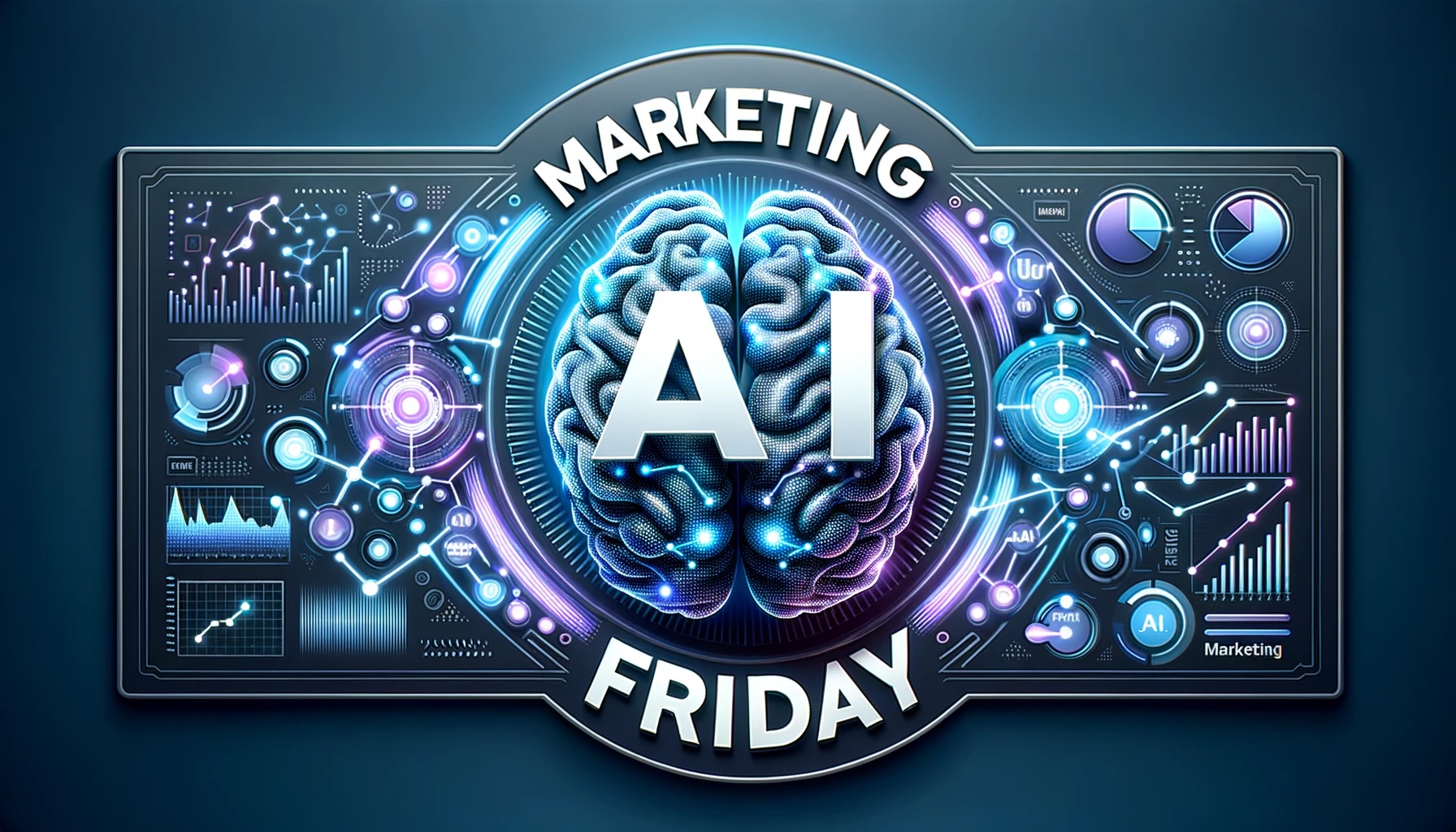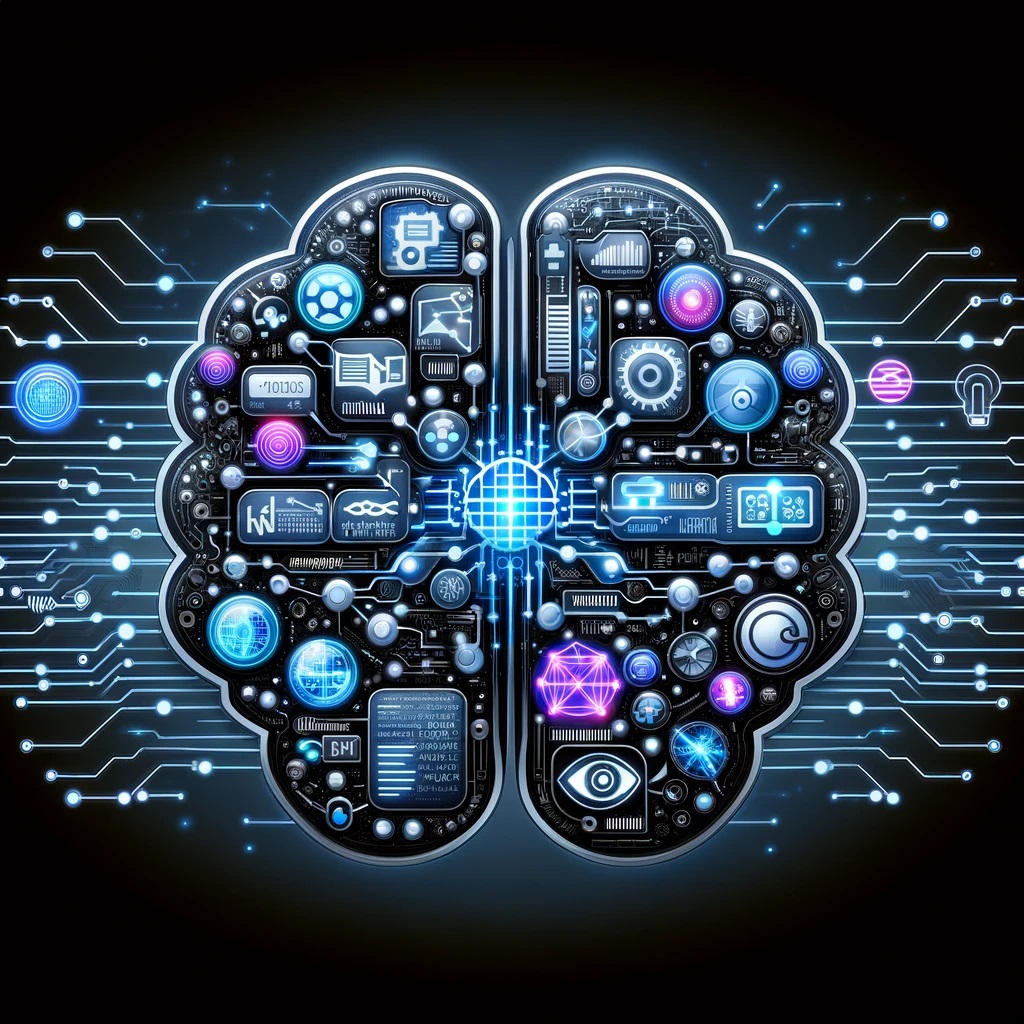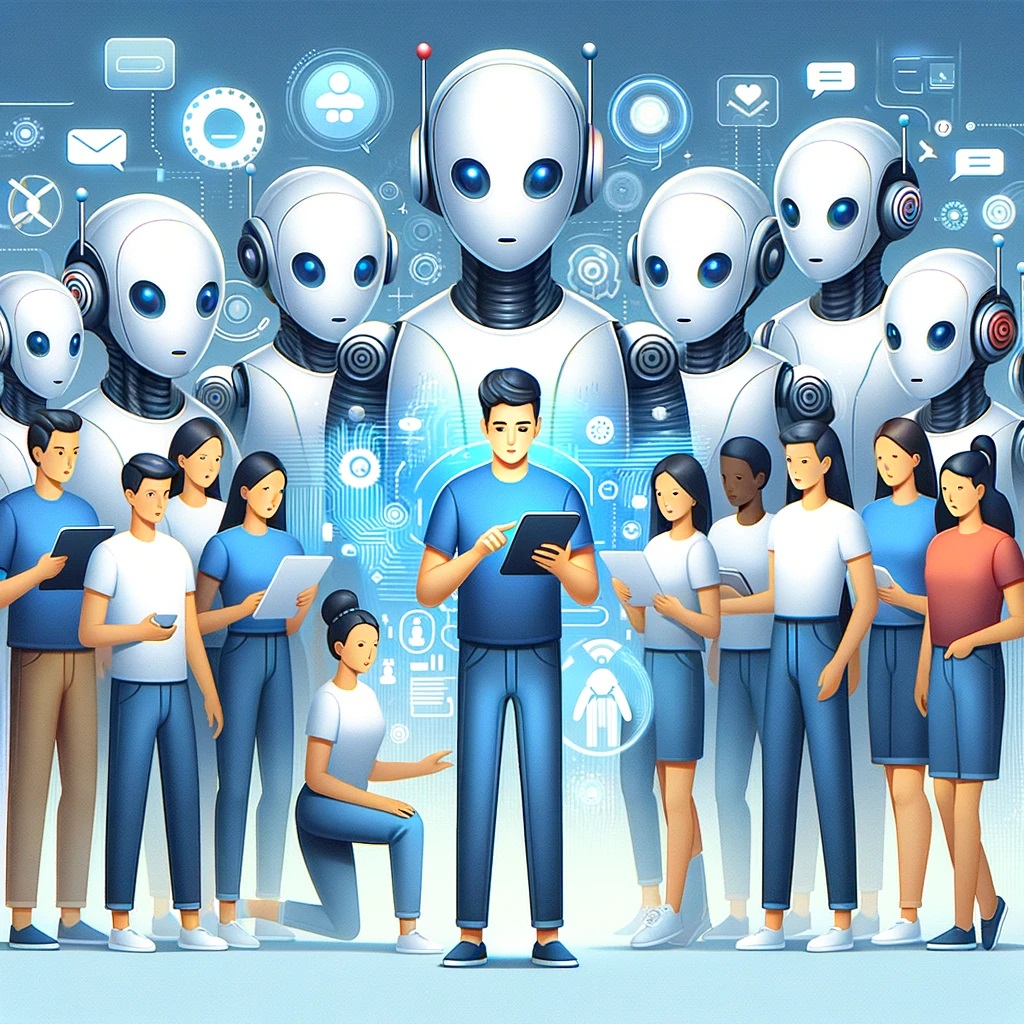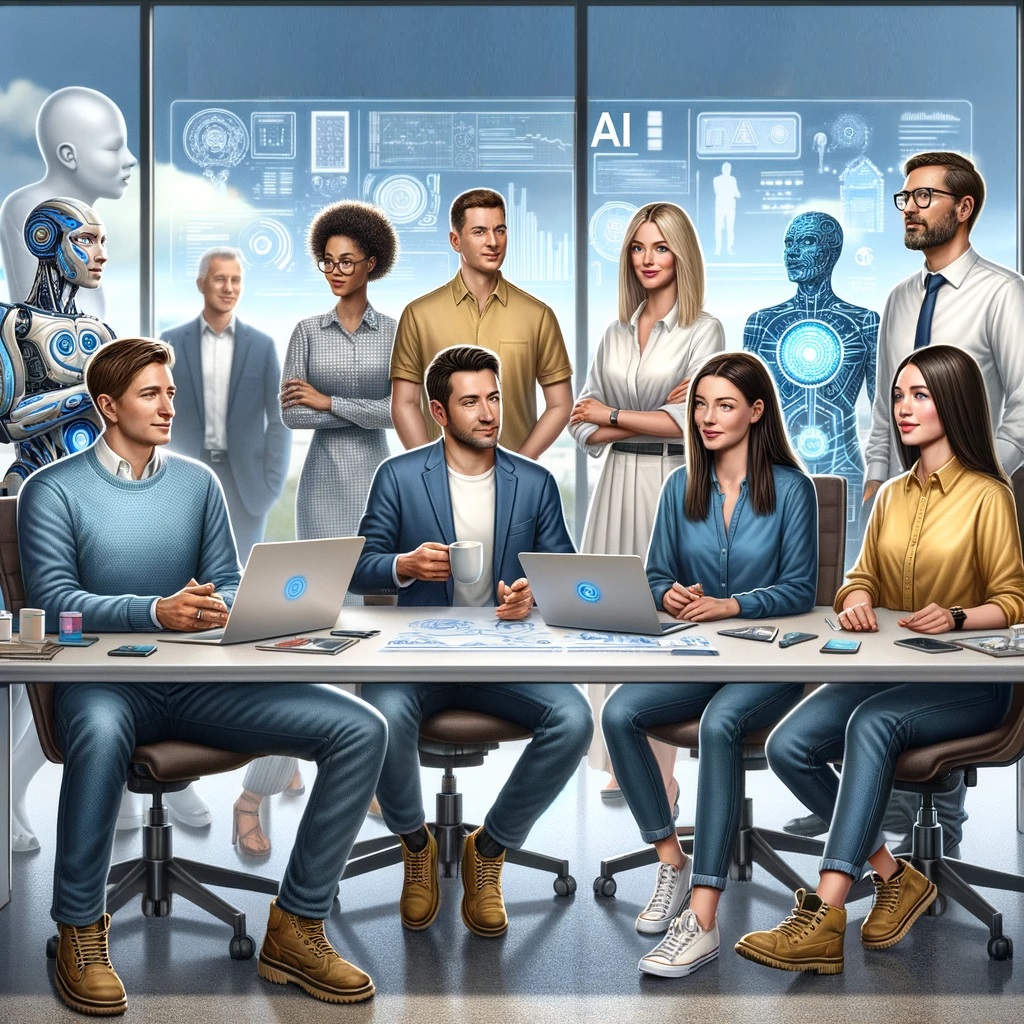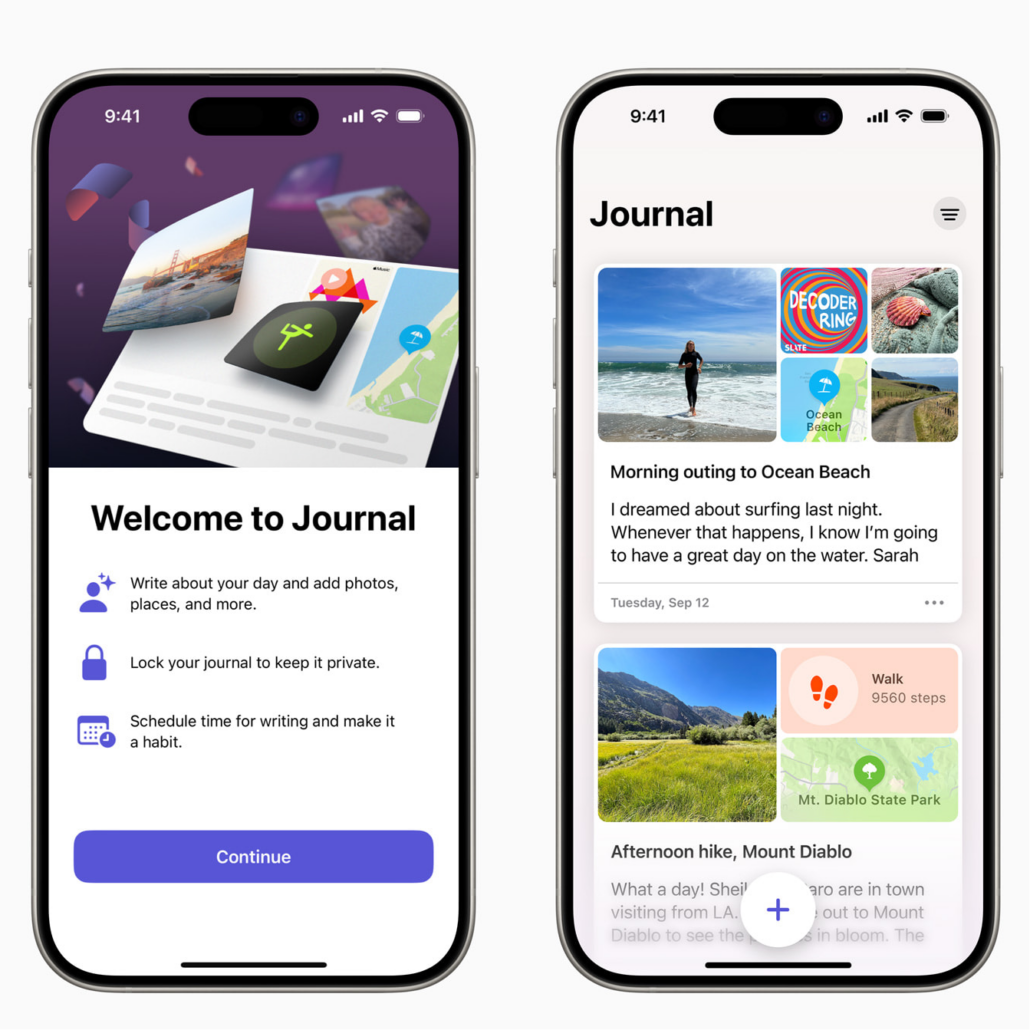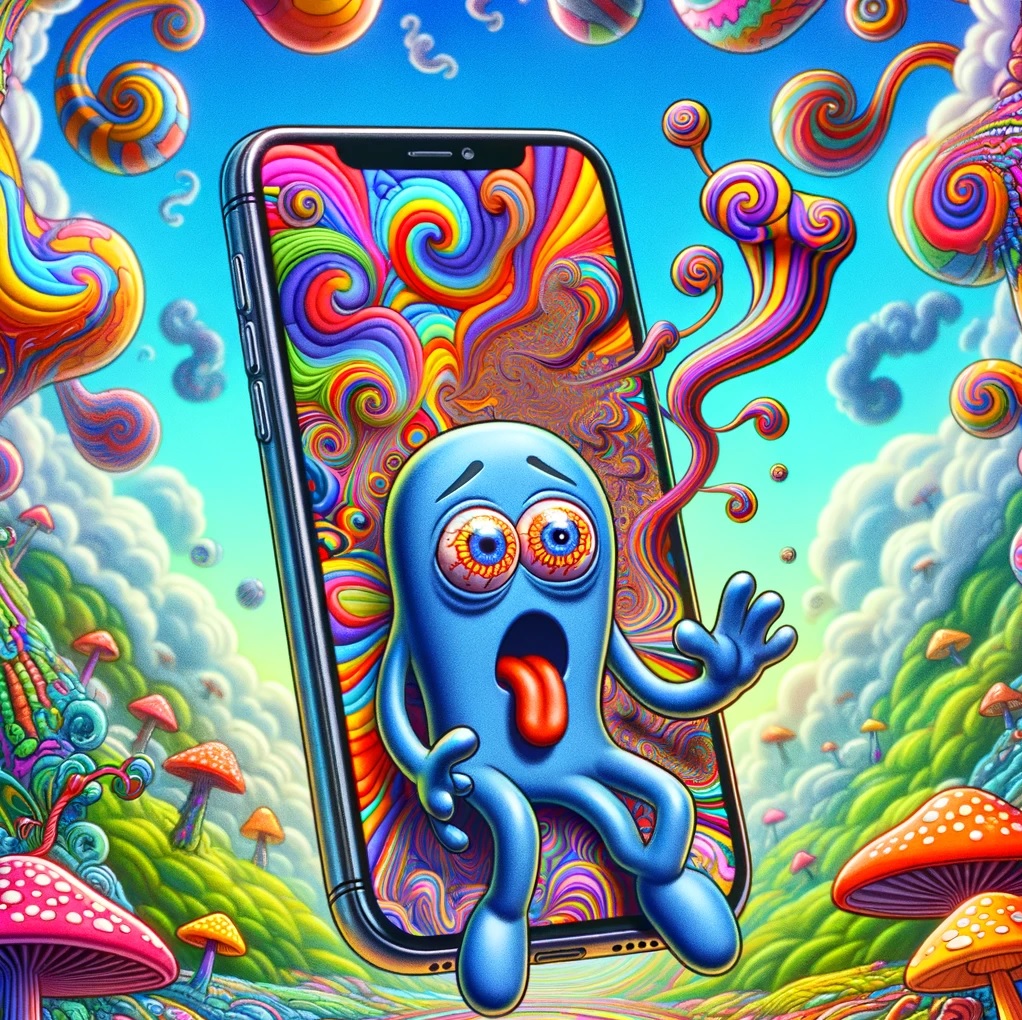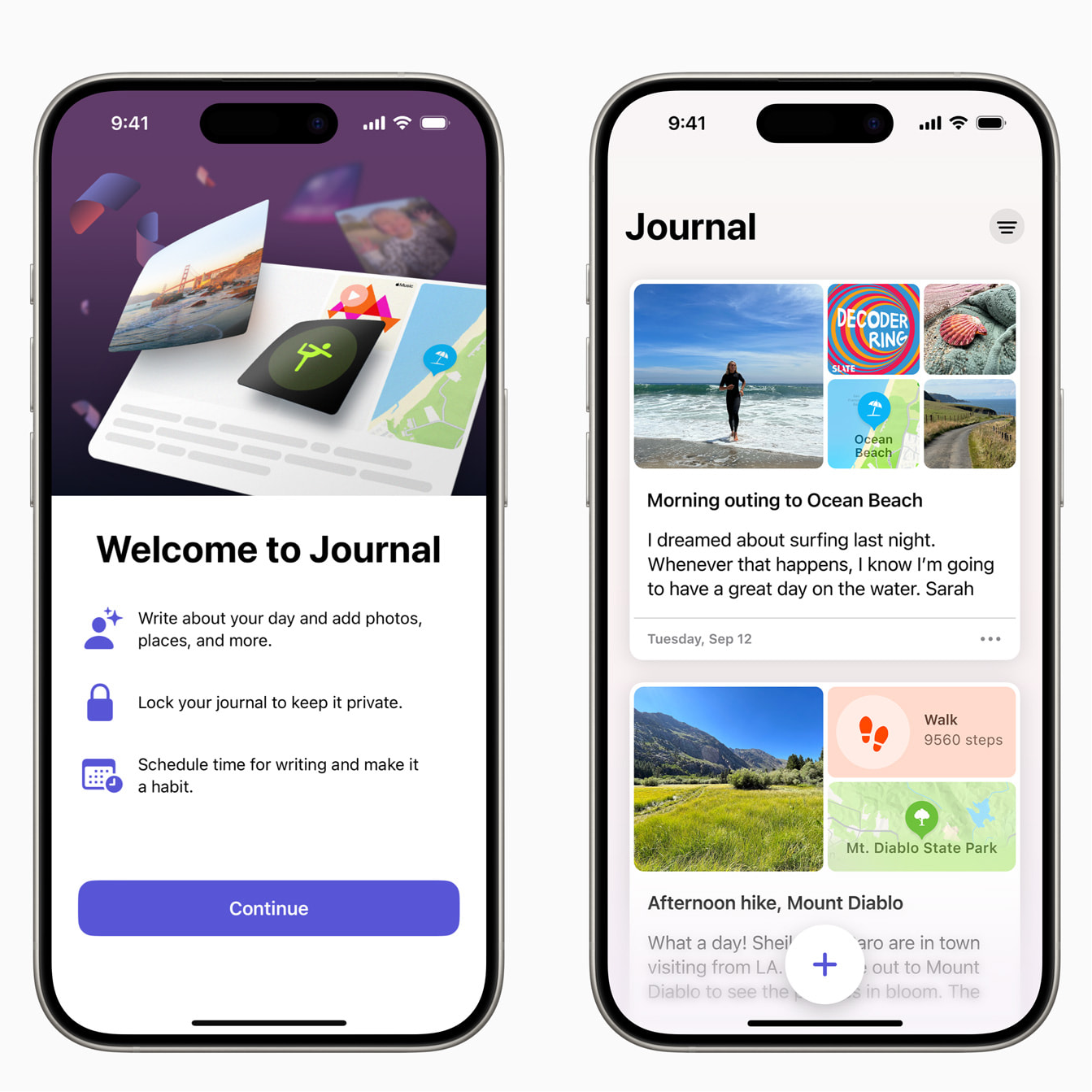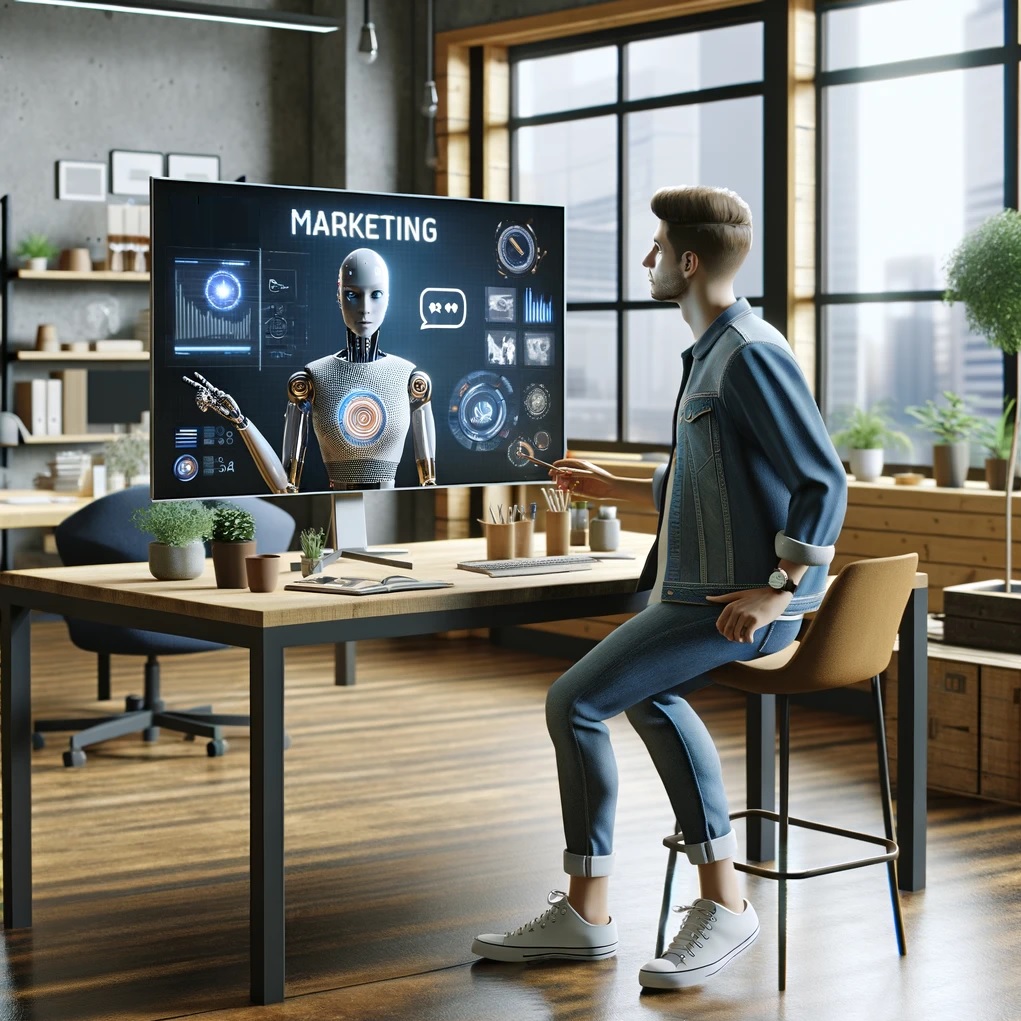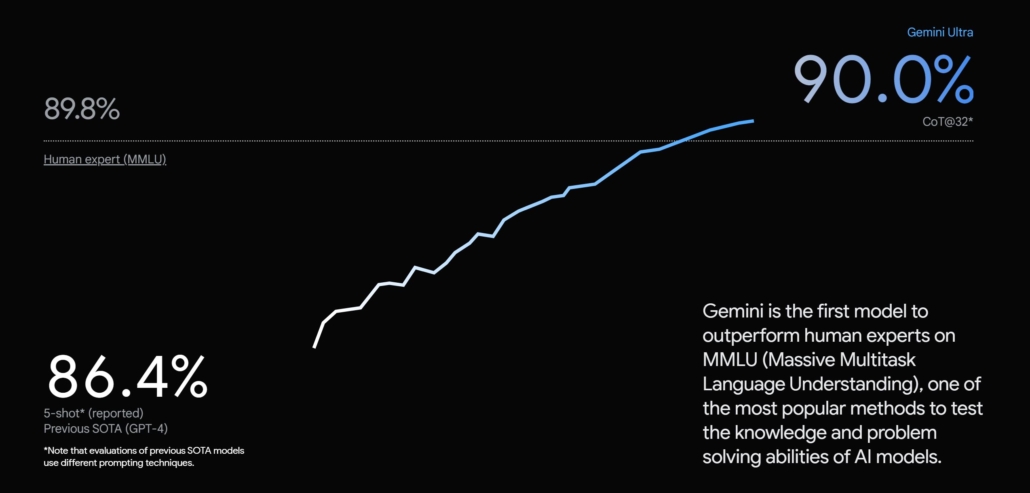Last year we experienced the first phase of awareness and exploration in the world of AI, laying the foundation for the AI era. We have watched a legion of new AI companies launch and existing companies begin to integrate AI into their products and services. In both our private and working lives, we are also discovering AI applications.
By 2024, this development is going to accelerate further. Most companies are going to get serious about integrating AI into their work processes, products and services. We will start to see large-scale experimentation and adoption, with AI becoming prominent in more and more facets of our lives.
Let's see what developments we can expect in 2024 and how they will impact our daily lives.
- AI models are getting smarter, more powerful and better
- The impact of AI on marketing
- The emergence of a team of AI assistants
- Access to proprietary language models
- New roles and functions in the AI era
- Apple introduces AI Diary, a harbinger of things to come
- Large Language Models (LLMs) are hallucinatory dream machines
One thing is certain: this time next year, our way of living and working will be radically different. But how exactly? Let's find out together.
AI models are getting smarter, more powerful and better
AI models are evolving rapidly and getting smarter, more powerful and better by the day. We are seeing a shift from traditional language models, which are purely text-based, to more sophisticated multimodal AI models. This new generation of models integpricing images, audio, video and code in addition to text. An example of this is Google's recently announced Gemini.
It is expected that ChatGPT-5, OpenAI's successor to GPT-4, will also be a multimodal model and will be launched early next year. There is speculation that GPT-5 will have more advanced features, including some degree of self-awareness and self-correction, but this is still unconfirmed.
This trend represents not only a shift in how AI affects SEO, but more importantly how it changes user behavior. The zero-click answers of AI chatbots offer an instant solution without the need to navigate through links, ads, pop-ups, SEO-optimized text and cookies. And you won't be retargeted. This is undoubtedly going to have a big effect on traditional search engines and website visits.
The impact of AI on marketing
The impact of AI on our marketing efforts is going to be profound. With advanced AI tools at our fingertips, content creation, distribution and customer service, among others, will not only become easier, but also significantly more powerful.
Let's look at 6 marketing areas where AI can be used.
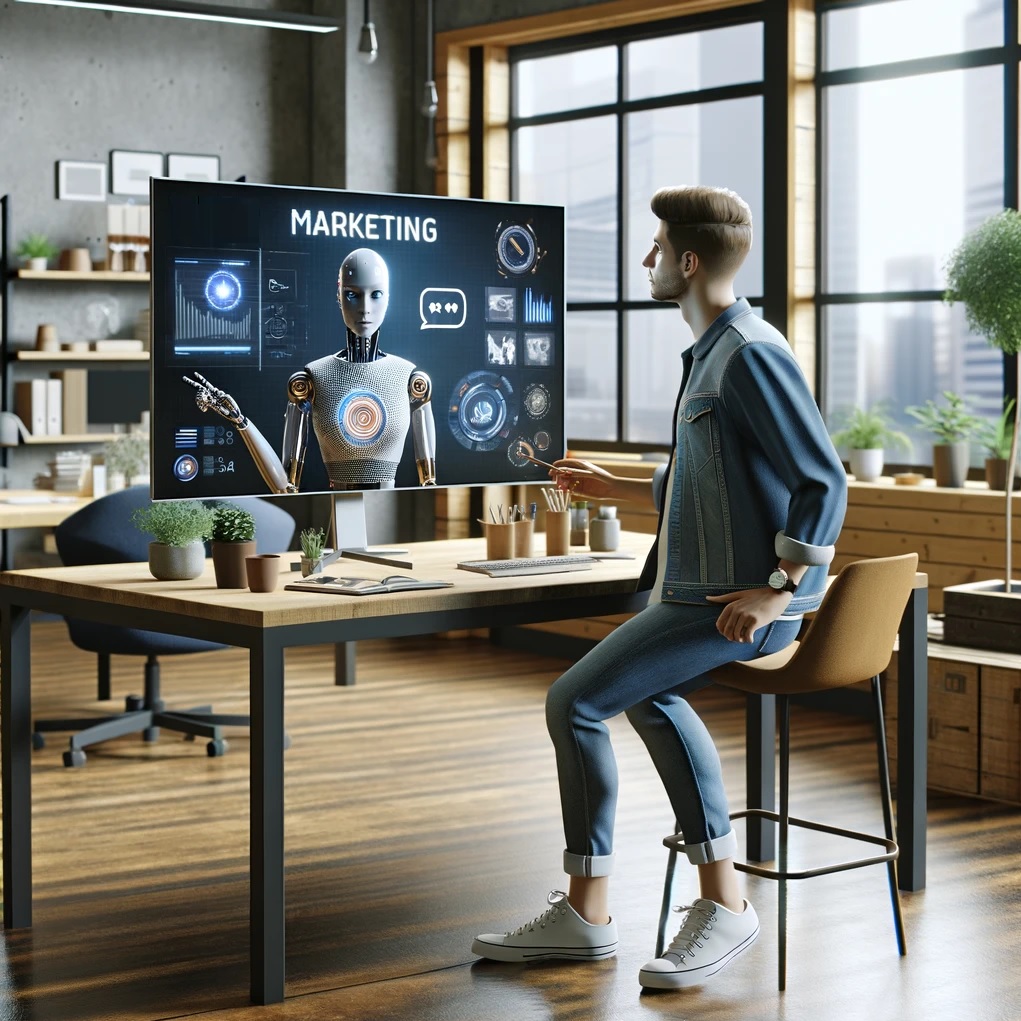
1. Content creation
For many marketers, content creation is the first area they use AI for. They use AI to create (more effectively) content such as text, images, audio and video. The quality of this is going to keep improving, where it is barely, if at all, distinguishable from real.
2. Content distribution
AI can help us improve visibility on various channels, such as social media, websites, web shop and email marketing. For example, consider an AI tool that adapts content on your website based on the visitor.
3. Online advertising
By using AI for online campaigns, we can analyze huge data sets and learn from user interactions, making our ads more relevant and effective.
4. Customer service
AI-powered chatbots offer a new dimension to customer service, allowing us to respond to customer inquiries quickly and efficiently, at any time of day.
5. Content strategy
By 2024, AI will be indispensable in developing content strategies. Recognizing trends and analyzing behavior will provide us with deeper insights than ever before.
6. Data and insight
AI helps us process mountains of data and gather valuable insights that can strengthen our content marketing strategy and execution.
Wondering what this looks like in practice? Check out a detailed breakdown of the specific marketing aspects where AI can play a rolehere.
The emergence of a team of AI assistants
The two most advanced AI models are OpenAI's ChatGPT-4 and Google's Gemini Ultra. These models are currently superior to all other AI models in the world, which do not get beyond the level of ChatGPT-3.5.
In general, the larger the AI model (which is trained on more data and thus requires more expensive computing power to train. For example, training GPT-4 cost more than $100 million!), the "smarter" it is.
In the world of AI, however, we see a difference emerging between generalist and specialized models. The generalist AIs, such as GPT-4 and Gemini, can handle a wide range of tasks. In contrast, the specialized AIs excel at specific tasks, although they are less flexible.
Imagine a team of AI assistants at your disposal. You have general assistants for many different tasks and more specialized assistants for very specific tasks. These AIs not only work for you, but also with each other. They can delegate tasks to each other, depending on who is best suited for a particular task.
For example, if you want to book a trip, a generalist AI assistant can find the perfect destination based on your preferences. It then engages a specialized AI to handle the booking.
The future of AI is not just about using a single smart assistant, but an entire network of AIs working together. This network will consist of both smart, generalist AIs and less sophisticated but specialized assistants.
Curious about how you can prepare your organization for this future?
Discover the 5 phases of AI maturity in organizations, including the phase of autonomous AI assistants.
Access to proprietary language models
Language models transform the way we interact with technology. These models fall into two categories: "closed source," such as ChatGPT-4 and Google's Gemini, where the source code is not publicly available and the owner retains complete control; and "open source," such as Meta's LLaMA. The open source models, share their source code and training data, making them accessible to all.
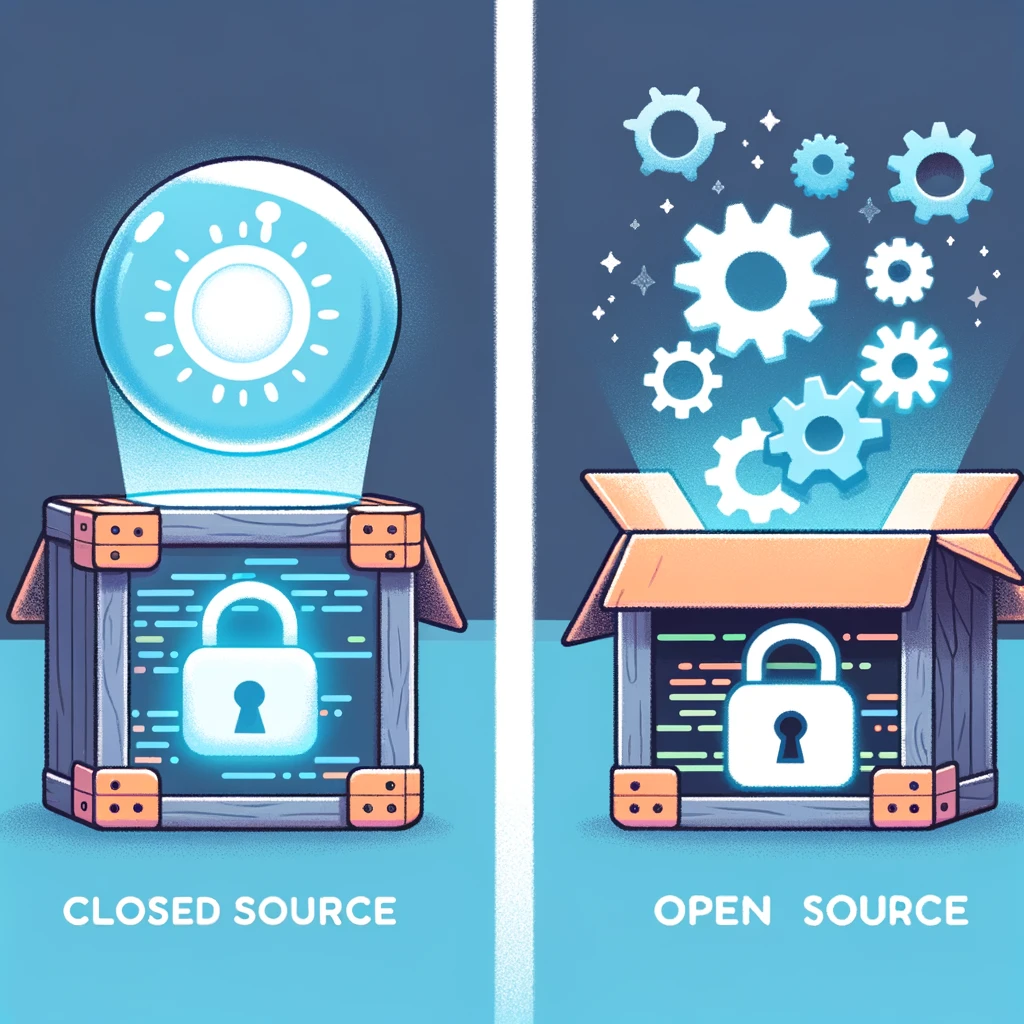
With the availability of open source language models (Large Language Models -LLMs), the world is open to smart developers to create effective and specialized AIs. These AIs can help with tasks that previously required complex and expensive programs. We are at the dawn of an era in which language models that respond to and learn from their environment will become the norm, both in our work and in our daily lives.
An interesting new player in this field is Mistral AI. This Paris-based startup, founded by former employees of Google's DeepMind and Meta, recently raised an impressive $415 million. With a valuation of $2 billion in just 10 months! (yes, you read correctly), Mistral AI looks set to become a major player. They focus on developing open, decentralized and accountable AI technology.
Mistral AI has also played an important role in the discussion surrounding the European Union's AI legislation and recently launched a developer platform in beta.
New roles and functions in the AI era
As we enter the AI era, many entrepreneurs are asking the question, "How do I ensure the right capacity and people to make our transition to AI happen?"
As your AI use m atures, the structure of your team must evolve. This means new roles and functions are needed:
Core function:
Chief AI Officer: Responsible for overarching AI strategy, policy, and implementation. Important is a thorough knowledge of business strategy, change management, and marketing technology procurement.
Must-have roles:
AI Project/Program Manager(s): Drives specific AI projects and programs. Functions as the central hub of the organization with additional AI representatives in each department.
Optional rollers:
Integration expert: Specializes in integrating AI tools into existing processes and systems.
AI developers: For building and maintaining custom AI tools.
Key stakeholders:
Marketing, Sales, Chief Editors, Analysts, Legal, Corporate Culture, and Data Security are critical to the smooth integration of AI into the organization.
It is essential to assemble a versatile team that can harness and apply the capabilities of AI in all aspects of the organization. With an AI steering committee, you can structure and organize this well. The future belongs to companies that embrace these new roles and fully harness the power of AI.
Apple introduces AI-powered Journal
Apple says it is working on advanced AI language models for iPhones and other devices, and has made significant breakthroughs in their implementation and storage. The company's researchers have developed a technique to store AI data in flash memory, making it possible to run complex AI assistants and chatbots on devices with limited memory.
These developments could lead to improved Siri features, real-time translation, and advanced capabilities in photography and augmented reality. Apple aims to integrate AI into as many apps as possible, while focusing on privacy and responsible AI development.
The launch of the AI-powered Diary app, may be a harbinger of innovative AI applications on the Iphone and other devices.
The Diary app can automatically suggest key moments from your recent locations visited, photos, music and workouts, to help you get started writing. With the update to OS 17.2, the Diary app will be added automatically, fully integrated into the Apple ecosystem.
Apple emphasizes that privacy is central to the development of this app. Data in the Diary app is encrypted while your iPhone is locked, and users have the option to activate additional security measures such as passcode, Face ID or Touch ID. All diary data is end-to-end encrypted and stored in iCloud, so only you have access to your memories.
Interestingly, diary suggestions are generated locally on the device. This means you have complete control over which suggested moments are shared with the app and added to your journal.
LLMs are hallucinatory dream machines
In closing, I share a fascinating insight from Andrej Karpathy, a leading AI researcher who also recently gave an impressive presentation on the development of LLMs. He highlights the "hallucination" property of AI such as ChatGPT, which often shows up in answers that seem out of context or incorrect. Many people see this as a flaw, but Karpathy offers a different perspective: LLMs are essentially dream machines.
Karpathy explains that what we think of as "hallucination" is in fact the core function of LLMs: they generate ideas and answers based on their training.
'We direct their dreams with prompts. The prompts start the dream, and based on the LLM's hazy recollection of its training documents, most of the time the result goes someplace useful. It's only when the dreams go into deemed factually incorrect territory that we label it a "hallucination." It looks like a bug, but it's just the LLM doing what it always does.'
Karpathy also makes clear the difference with search engines, which only reuse existing information and cannot create new ideas. An LLM is dreaming 100% and has the hallucination problem. A search engine is dreaming 0% and has the creativity problem. He emphasizes that although hallucination is inherent in LLMs, we need to find ways to control this property in AI assistants.
This vision from Karpathy offers an interesting new perspective on AI, emphasizing the importance of leveraging their unique creative capabilities. Looking ahead to 2024, it is essential to focus on the strengths of AI tools and deploy them where they are most effective for us. By continuously experimenting and regularly testing for improvements, we can make the most of the lightning-fast developing AI technology.
Take a leap forward in your marketing AI transformation every week
Every Friday, we bring you the latest insights, news and real-world examples on the impact of AI in the marketing world. Whether you want to improve your marketing efficiency, increase customer engagement, sharpen your marketing strategy or digitally transform your business, "Marketing AI Friday" is your weekly guide.
Sign up for Marketing AI Friday for free.
